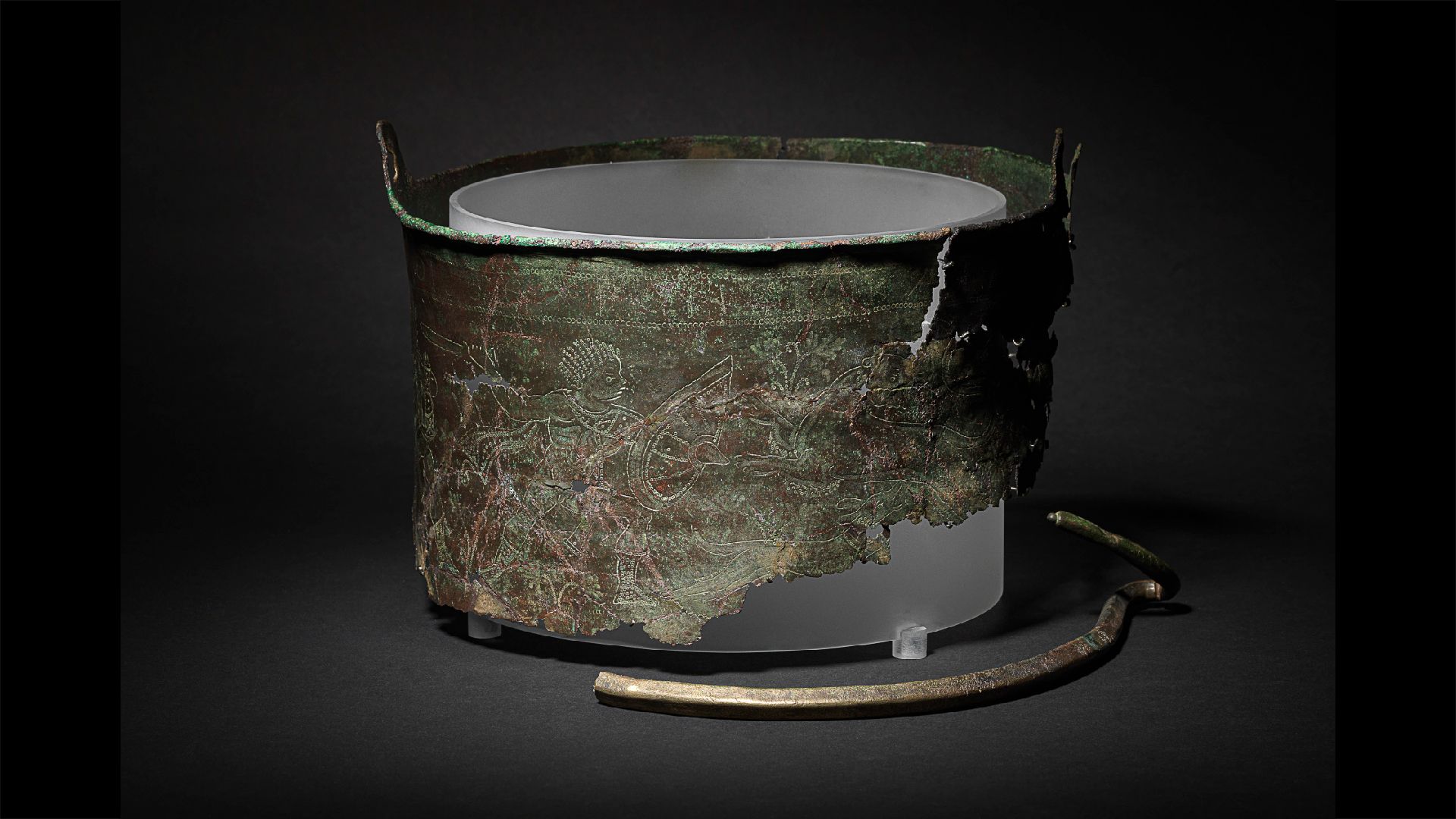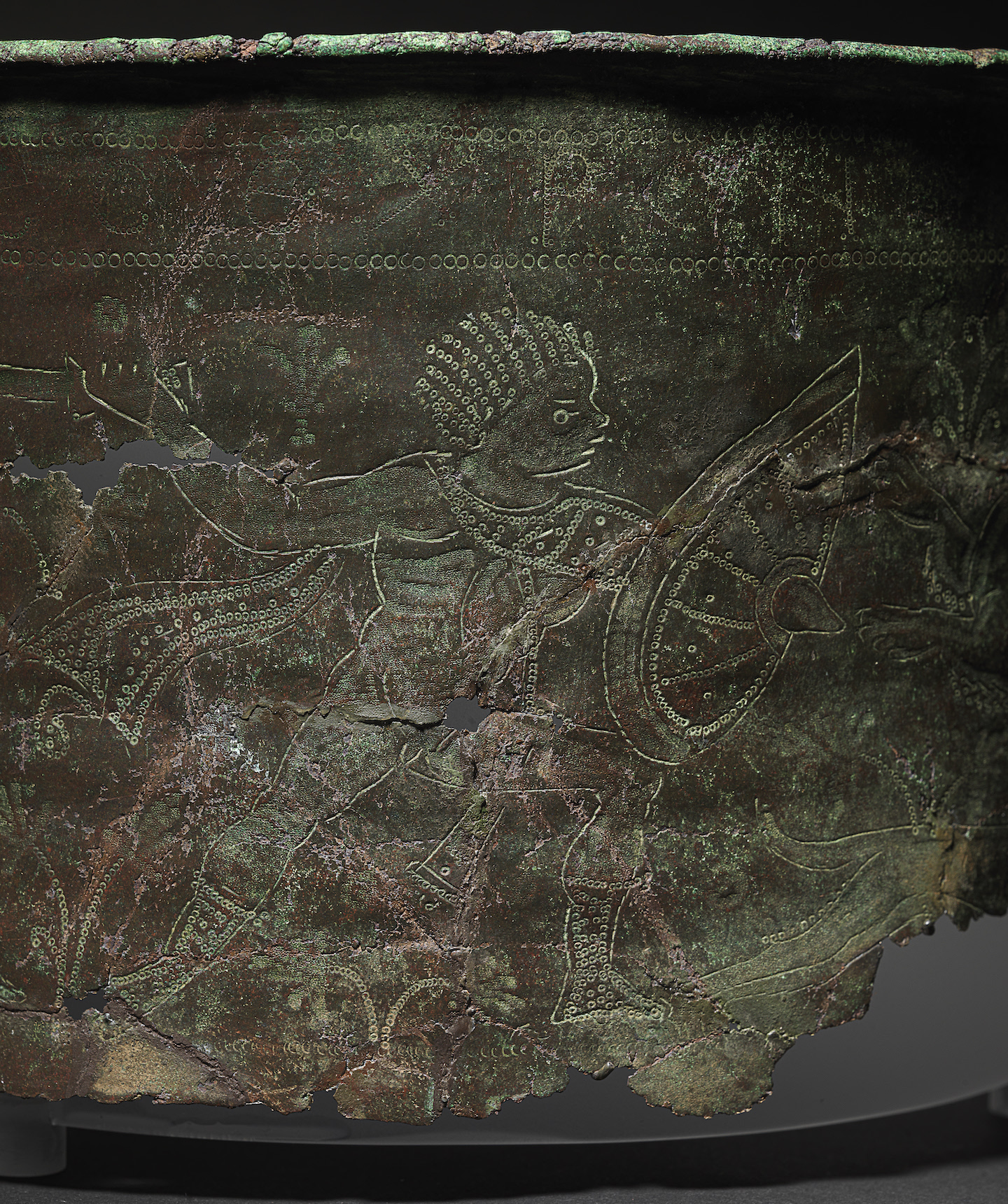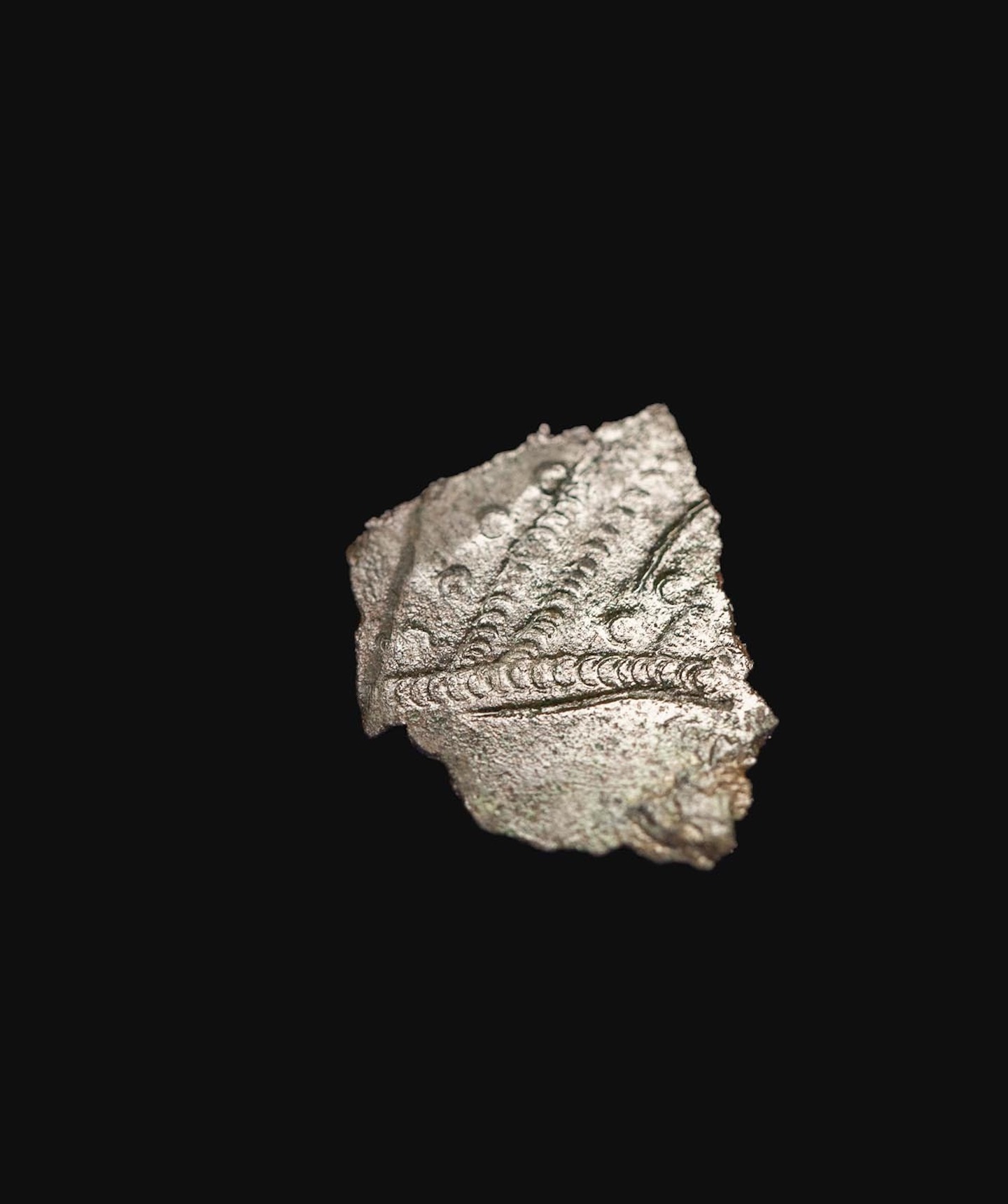
While working at the Anglo-Saxon site of Sutton Hoo in England, archaeologists found the missing pieces of a 1,500-year-old copper bucket imported from Turkey. The bucket, which is at least a century older than the famed ship burial, may provide a window into how people lived in early medieval times.
A team of archaeologists, conservators and volunteers from Time Team, the U.K.'s National Trust and FAS Heritage discovered the metal fragments in late June during excavation and metal-detecting work at Sutton Hoo.
Sutton Hoo is best known for its magnificent seventh-century ship burial, whose 1939 discovery was featured in the 2021 movie "The Dig." But the burial was just one part of a complex of 18 separate burial mounds found near Suffolk in southeastern England, many of which contained jewelry and coins. Evidence of imported goods — including an Egyptian bowl, Eastern Mediterranean silverware and a Middle Eastern petroleum product called bitumen — has also been discovered at Sutton Hoo.
But the copper-alloy bucket, known as the Bromeswell Bucket, predates the ship burial by at least a century. The fragmented bucket, which was found in 1986, depicts a North African hunting scene featuring lions and a dog. It was likely produced in the sixth century in Antioch, Turkey, which was then part of the Byzantine Empire. An inscription in Greek on the bucket reads, "Use this in good health, Master Count, for many happy years," suggesting that it may have been a diplomatic gift.
Related: Metal detectorist finds sword pyramid from time of mysterious Sutton Hoo burial
The artifacts uncovered last month were decorated with figures similar to those on the original find. So the team employed X-ray fluorescence (XRF) — which is used to determine which elements are present in an object and to create a unique elemental "fingerprint" of the artifact — to confirm that the newly recovered fragments are indeed part of the sixth-century Bromeswell Bucket.


"Thanks to closer inspection, we now believe that the bucket had been previously damaged and then repaired," Angus Wainwright, a regional archaeologist in the East of England for the National Trust, said in a statement. "In-depth analysis of the metals suggests it might even have been soldered back together."
Although East Anglia has been occupied since at least 3000 B.C., when Sutton Hoo was in use as a cemetery in the sixth and seventh centuries, the area was relatively densely populated and part of a busy trade network. The Sutton Hoo treasures represent diverse objects, including pagan and Christian artifacts, brought there from all over Europe and the Middle East. The ship burial and cosmopolitan nature of Sutton Hoo may even link it to the Old English epic poem Beowulf, which includes tales of gift-bestowing kings from far-flung lands and was composed around the same time.
"It's hoped that this two-year research project will help us learn more about the wider landscape at Sutton Hoo and the everyday lives of the people that lived there," Wainwright said. "So, this find is a great step on that journey."







